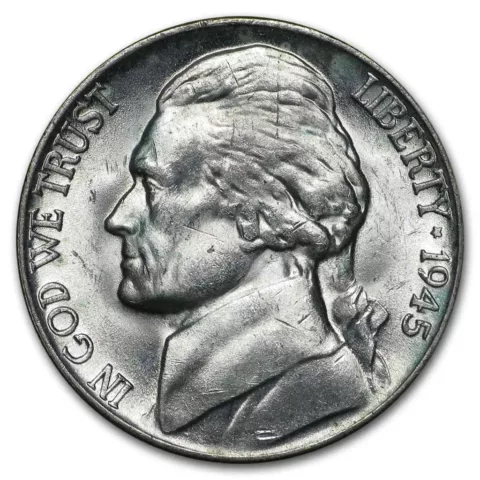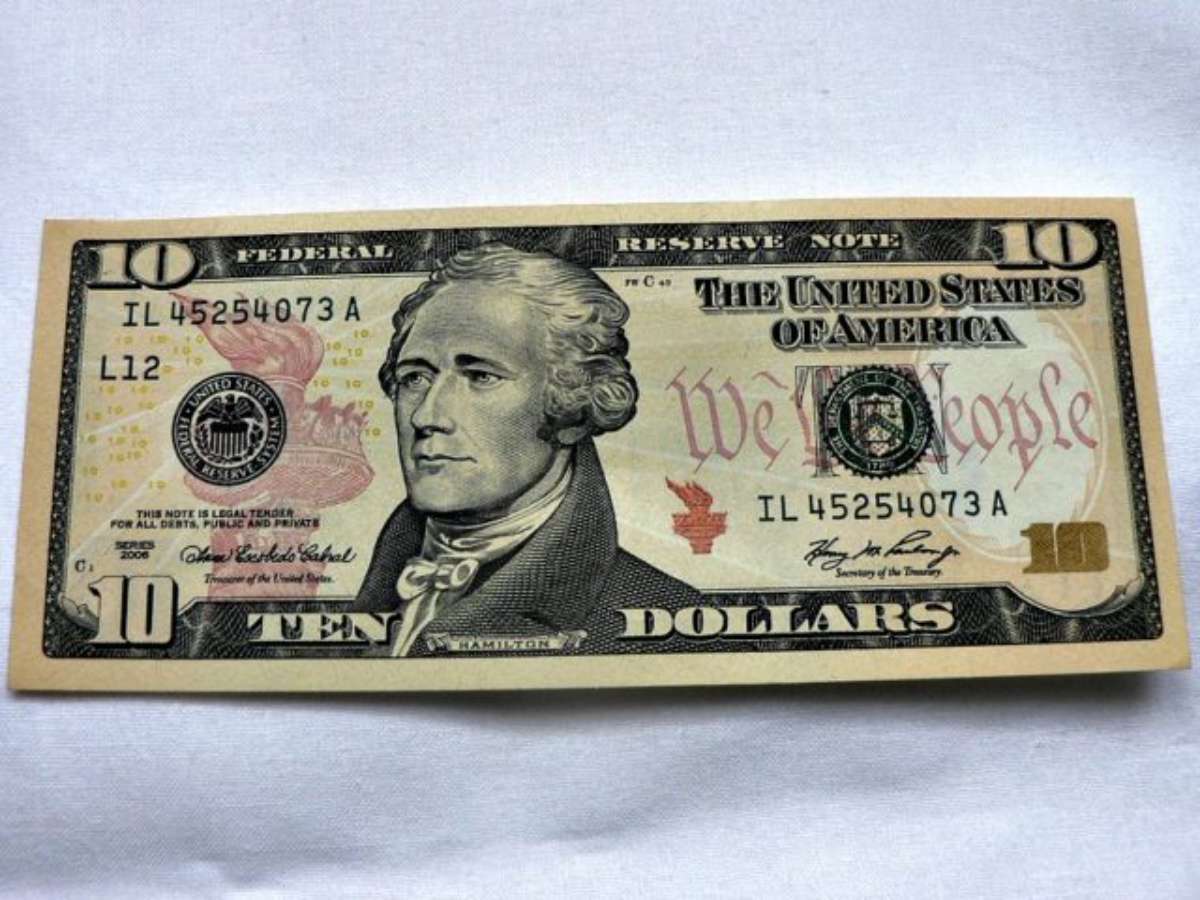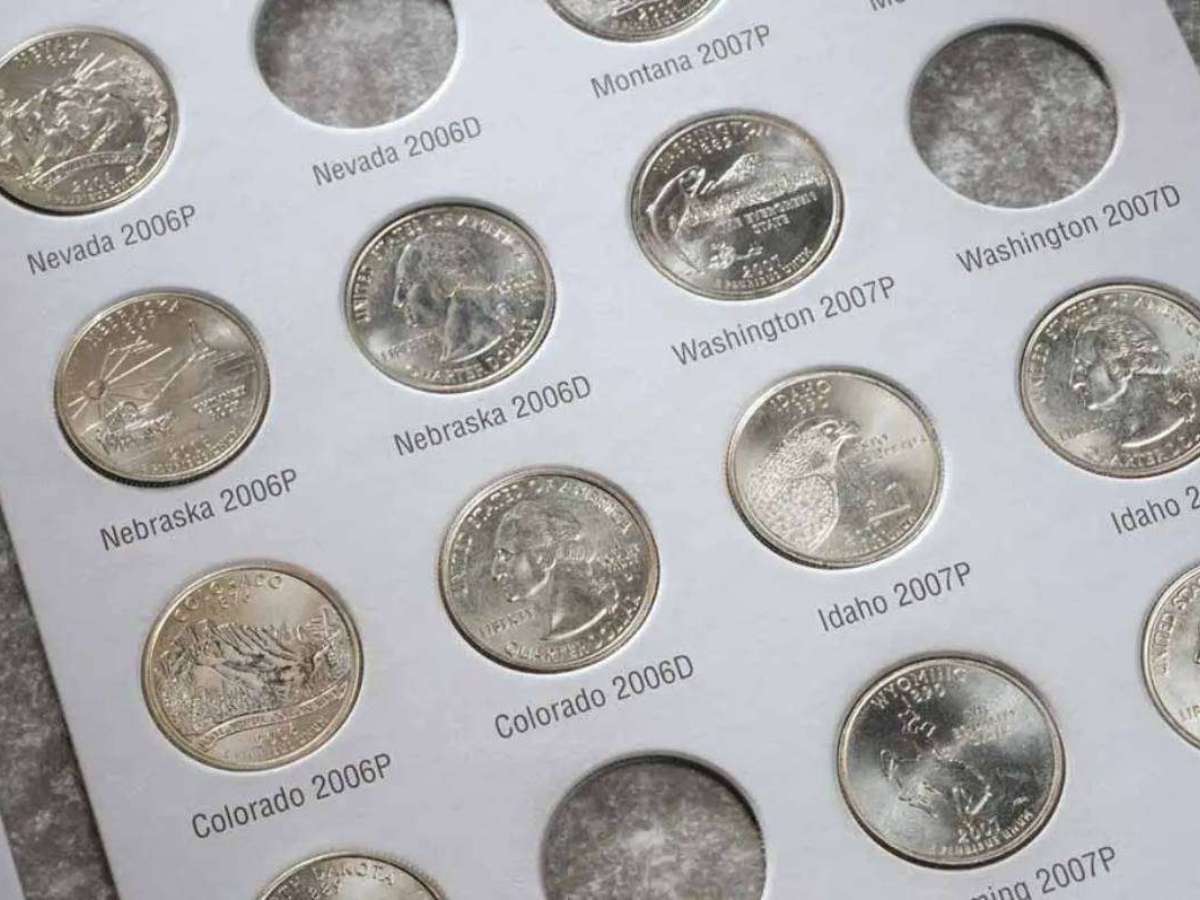
Did you know that all 1945 nickels are worth more than face value?
Yep… any 1945 Jefferson nickel is worth many times face value. Possibly even thousands of dollars!
That’s because 1945 nickels are made from silver.
Of course, the exact value of an old 1945 silver nickel also depends on the condition of the coin and the presence of any errors or varieties.
How Much Is A 1945 Nickel Worth?
For starters, all 1945 silver nickels are worth more than their 5-cent face value — including the ones that are well worn or even slightly damaged!
That’s because 1945 Jefferson nickels are made from 35% silver composition. And the intrinsic worth of this whitish precious metal is way more than the coin’s declared five-cent face value.
The reason 1945 five-cent coins contain silver is because nickel was needed to make artillery for World War II — which saw direct United States military involvement from 1941 through 1945.
Beginning in 1942, nickel was removed from the Jefferson nickels. It was replaced with an alloy of 56% copper, 35% silver, and 9% manganese.
These so-called war nickels were struck through 1945. They have a large mintmark over the dome of Monticello on the reverse (tail’s side) of the coin. (The “P” mintmark refers to the Philadelphia Mint, “D” signifies the Denver Mint, and “S” indicates the San Francisco Mint.)
Now, let’s see how much your 1945 nickel is worth…
1945-P Nickel Value
With a total mintage of 119,408,100 pieces, the 1945-P nickel is the most common of the 3 different issues struck for circulation.
In typical worn condition, a 1945-P Jefferson nickel is worth about $1.25 to $2 — depending mainly on the current price of silver. Average uncirculated specimens have a value of $5 to $10.
The record price for a 1945-P nickel is $11,500, which was paid in 2007 for a specimen graded by Professional Coin Grading Service (PCGS) as MS67 with Full Steps details.
1945-D Nickel Value
The scarcest of the 3 different 1945 Jefferson nickels is the one carrying the “D” mintmark for Denver.
While 1945-D nickels may have the lowest mintage of five-cent coins for that year (37,158,000), they’re still common enough that they really aren’t super-expensive coins in circulated grades.
Still, they’re worth much more than face value, and a worn 1945-D nickel fetches around $1.25 to $2 — depending on the price of silver. Uncirculated 1945-D nickels are worth $5 to $10.
The most valuable 1945-D nickel is the PCGS-graded MS68 Full Steps example that sold for a whopping $19,975 at a 2014 auction. Now that’s one expensive nickel!
1945-S Nickel Value
Even though the 1945-S Jefferson nickel has a mintage of 58,939,000 (which falls between the 1945-P and 1945-D production figures), it’s really not any more or less valuable than the other coins — at least in average circulated and uncirculated grades.
This is mainly due to how relatively available these 3 coins are in the marketplace. They’re all about equally common today. (Or at least there are sufficient amounts to supply collectors with the examples they want.)
Having said that, we can list the value of a circulated 1945-S nickel at around $1.25 to $2 in worn grades and $5 to $10 in uncirculated condition.
The most expensive 1945-S nickel ever to cross the auction block did so in 2015, when a PCGS MS67 Full Steps was sold for an impressive $10,692.50.
A List Of Rare 1945 Nickel Errors
There are some rare and valuable errors and varieties to be found among the 1945 Jefferson nickels!
These include a popular doubled die variety that is worth a good chunk of change.
Let’s look more closely at this valuable doubled die nickel error and some of the other unusual Jefferson nickel errors worth looking for…
1945 Reverse Doubled Die Nickel Error
The 1945 doubled die nickel shows significant doubling in the inscriptions “MONTICELLO” and “FIVE CENTS” on the reverse of the coin. You should be able to see this doubling with the naked eye.
Worn examples are worth around $30 and up, while uncirculated specimens trade for more than $100.
The 1945 doubled die reverse nickel is the king of error nickels from that year, but there are others worth looking for too…
1945 Nickel With Repunched Mintmark Error
Back in 1945, U.S. Mint officials still individually handpunched mintmarks onto working dies — and this left plenty of room for error. Sometimes the mintmark punches were accidentally placed sideways, or in slightly the wrong location, and so on.
These mistakes usually required corrections, and thus the mintmark would be punched yet again.
Repunched mintmark varieties are numerous, and they are all collectible!
Most are worth $3 to $5, though some of the more dramatic varieties can bring $10 to $20 or more.
NOTE: This is where having at least a 5X magnifying glass can be a huge help, because it will help you spot the little details in and around the visible mintmark that will clue you in to whether you have a variety or not.
1945 Nickel With Off-Center Error
These are pretty easy to spot…
If your 1945 nickel is missing any part of the design on one side of the coin, it’s most likely an off-center error coin.
The vast majority of off-center coins are only 1% or 2% off square, and these are so common that they really have no additional value.
The ones worth keeping are 5% off-center or more and have a value of $10 to $25 in the case of a 1945 nickel.
The most valuable is a 1945 nickel with an off-center error that’s missing about 50% of the design — yet still shows a complete date and mintmark. These can be worth well more than $100!
1945 Nickel With Die Crack / Die Break Error
These are just different names for the same type of error — which involves raised lines or bumps caused by cracks or breaks in the die. These happen when the die is either aging and finally gives way, or something seriously wrong happens to the die while in operation causing it to crack. These breaks on the die show up as raised anomalies on a finished coin.
The most valuable types of die crack result in a large, flattish plain area attached to the rim. These types of die cracks are called cuds and range in size from very tiny to quite large. The larger and broader the cud, the more valuable the coin is. Some die cud errors sell for $100 to $250 or more.
Smaller die cracks may look like thin raised lines cutting across the lettering, date, Jefferson’s face, Monticello, or other parts of the silver nickel. Values for most die cracks are highly individualized for each specific coin. Depending on the size, prominence, and location of such die cracks, errors like these may be worth anywhere from a few dollars to many hundreds of dollars apiece.
IMPORTANT: What Is The Grade Of Your 1945 Nickel?
To determine the true value of your 1945 nickel, you first need to know what condition (or grade) your coin is in.
Grab a coin magnifier and a copy of the U.S. Coin Grading Standards book. Then, watch this video to see how to grade coins yourself at home:




